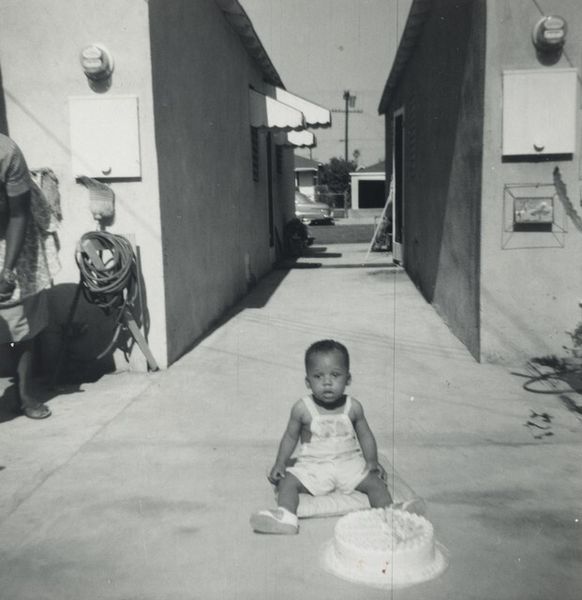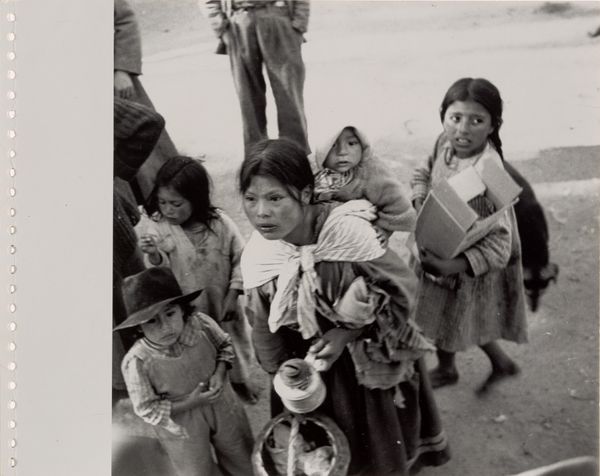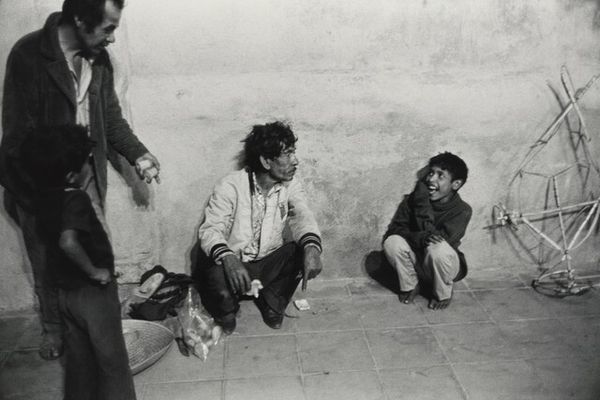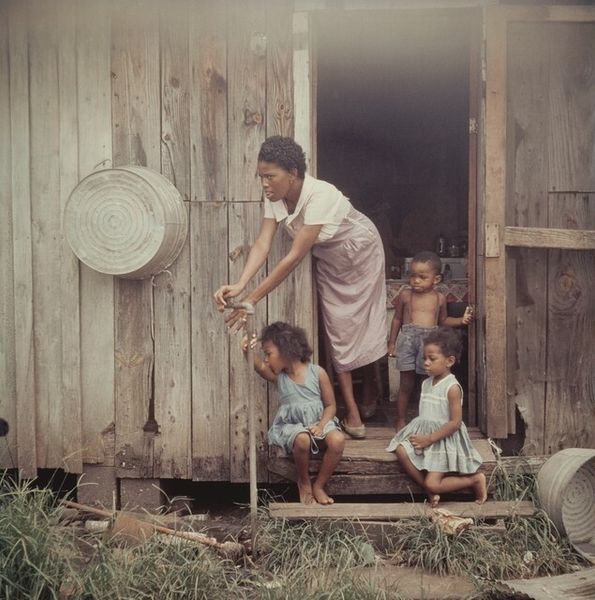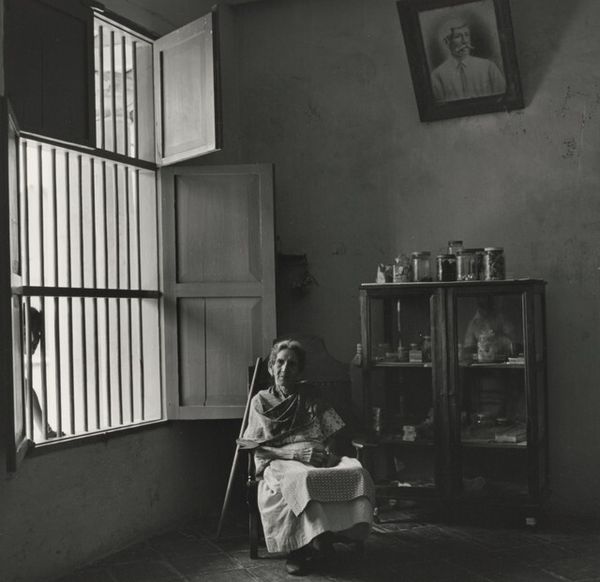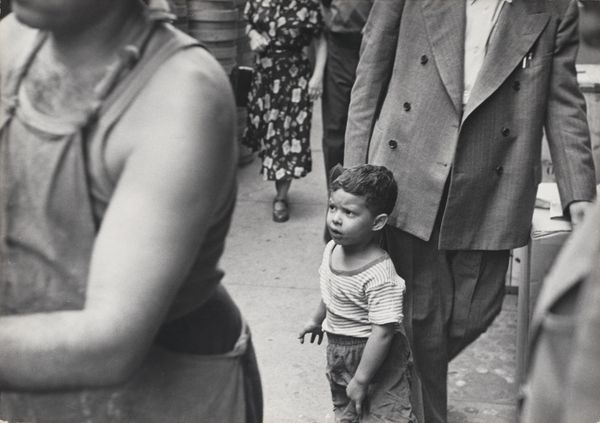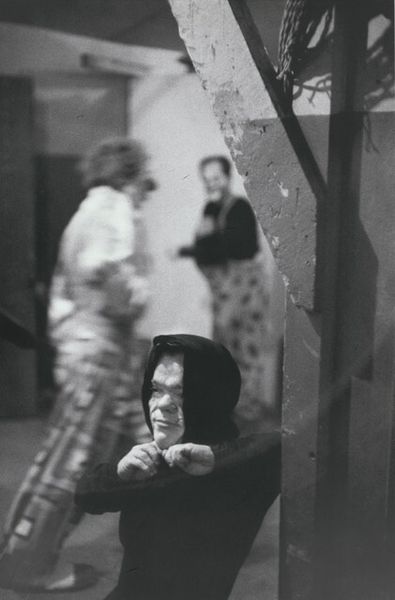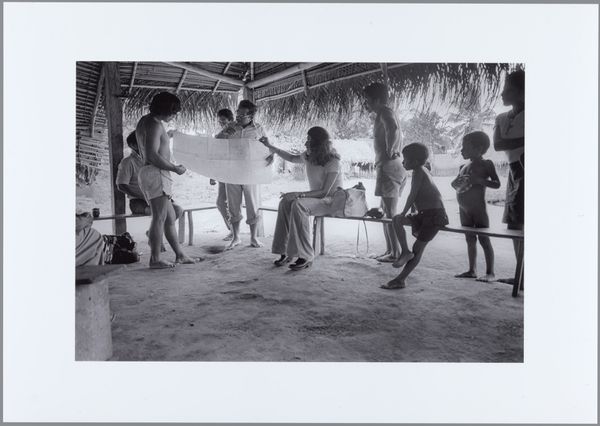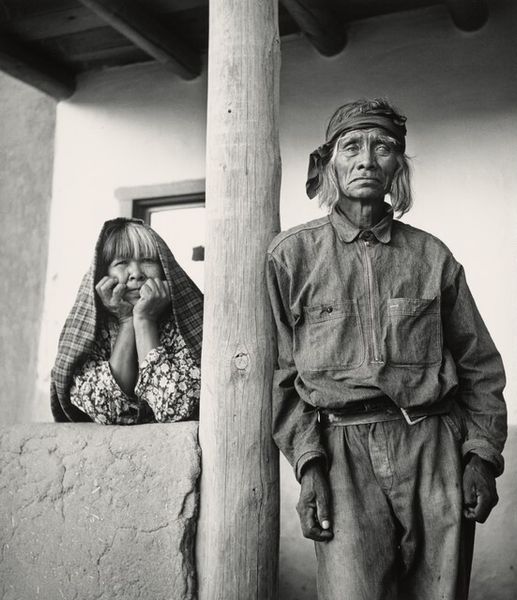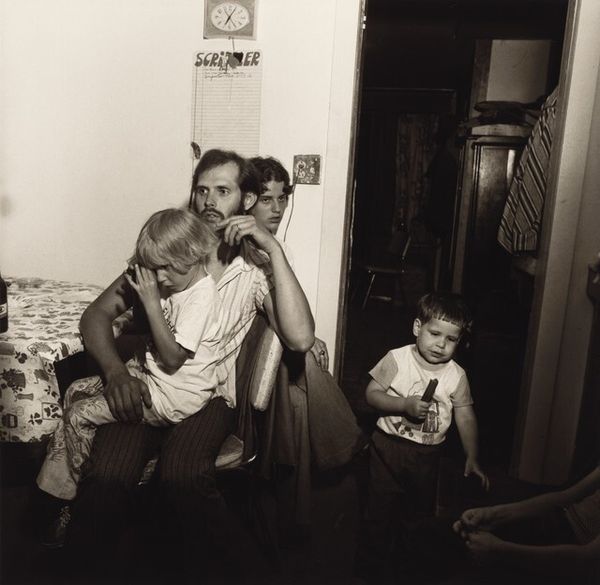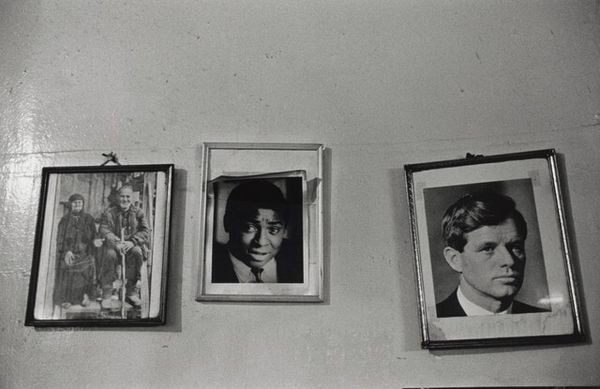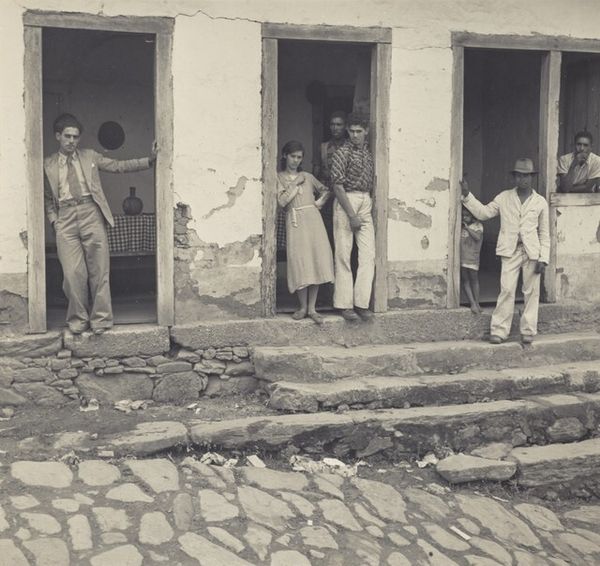
photography, gelatin-silver-print
#
portrait
#
black and white photography
#
archive photography
#
photography
#
black and white
#
gelatin-silver-print
#
monochrome photography
#
monochrome
#
realism
#
monochrome
Dimensions: image: 19 × 28 cm (7 1/2 × 11 in.) sheet: 24.5 × 35 cm (9 5/8 × 13 3/4 in.)
Copyright: National Gallery of Art: CC0 1.0
Editor: This is Ed Grazda’s "Guatemala," a gelatin-silver print from 1975. The monochrome gives it a timeless, almost documentary feel, and the composition with figures framed by doorways and staircases is striking. What jumps out at you when you look at it? Curator: Formally, I'm intrigued by Grazda’s use of receding planes and the manipulation of light. Note how the strongest contrast exists between the interior spaces and the light flooding the doorway. This highlights the figures standing between these thresholds. The use of grayscale tonality further emphasizes the structure, creating a complex interplay of light and shadow that organizes the pictorial space. Editor: So, you're drawn to the interplay of space and light, more than the subjects themselves? Curator: Not exclusively. But observe how the geometric composition directs our eye. The stairway in the central doorway rises diagonally, drawing us deeper into the picture. The placement of the individuals anchors the composition, balancing the receding planes. Are you struck by the geometric relationship? Editor: I see what you mean now. It's almost like he's deliberately created this set of visual relationships. There's that contrast between light and shadow, but then he uses the figures to soften the geometry. It feels more structured than candid. Curator: Precisely! Consider the artist’s selection of a square format as well. Do you think this strengthens the balance and tension between realism and formal organization in this work? Editor: Yes, absolutely. I initially saw a straightforward scene, but now I notice how the arrangement of shapes contributes to a more structured reading. Curator: And hopefully you see now how focusing on elements such as light, tonal range and composition gives us greater insight into understanding the artwork’s totality.
Comments
No comments
Be the first to comment and join the conversation on the ultimate creative platform.
